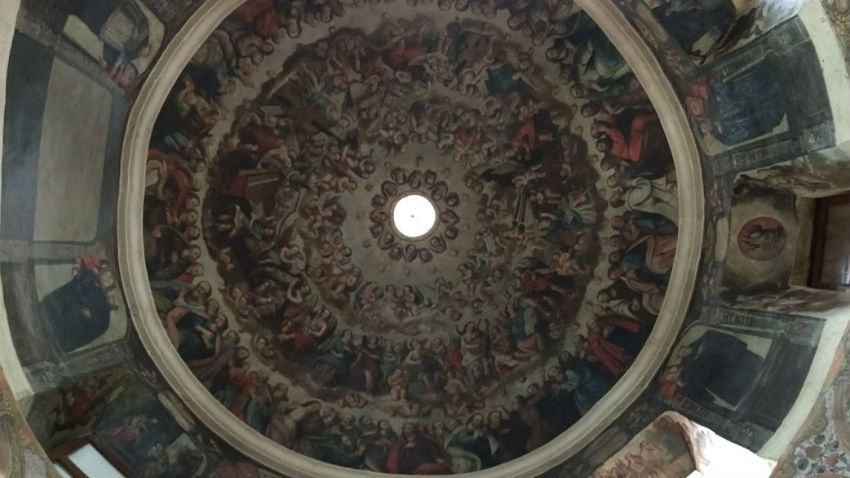
by Joseph Toone
On a recent Saturday I was doing what I do, taking two vans full of Texans on a tour of the Silver Route, cloistered monastery and Atotonilco. When we pulled into Atotonilco my point of contact uttered, “I’ve a pal meeting us here. Do you mind if he chats first, for about thirty minutes?” Of course, I didn’t mind; I really like learning new stuff from new people.
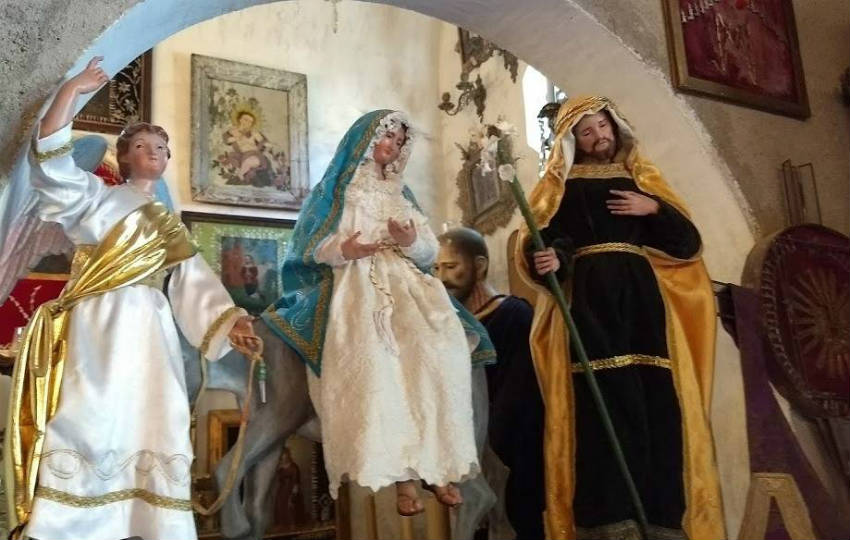
Well, the lad, Luis, was young and knew local art history in ways rivaling my own knowledge. Also, Luis has talent, as he actually can both create and repair art. I was in awe. So began a visit to Atotonilco unlike any other. I felt like one of the kids that won the golden ticket to visit Willie Wonka’s chocolate factory.

I knew Luis was in like Flynn when he started chatting in the main chapel. I never speak in there, as the nuns and caretakers make it painfully clear to me that the only noise that gets made in there is distant chanting or close-by wailing, neither of which I’m any good at.
Then Luis whipped out keys to let us in a back room to the right of the altar. First thing I noticed upon entering is a nun with a Cosco-sized can of Pledge and I was immediately thrust back to high school thinking “Sister is going to see us in here and whack me with her Pledge can.”
But no, we didn’t warrant a passing eye contact. Instead I could view the ancient art that depicted the life of Felipe Neri Alfaro, the priest that built the church, along with paintings of Virgins and saints.
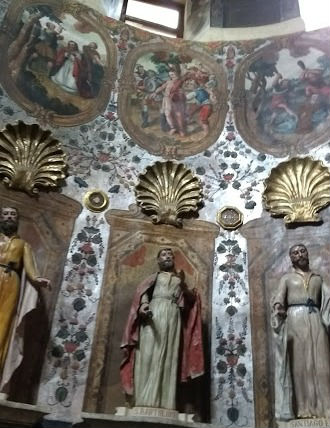
Next we stepped into a small circular room behind the altar lined with the apostles. Above each of them was an image depicting their death. There was no dying in their sleep, or peaceful drowning, for these guys. Each death is more gruesome than the next. Above all, in the dome, are folks in Heaven including the various levels of angels.
The one apostle missing is Peter whom, since he betrayed Jesus, was taken out and burned at some point. The statue of Judas Iscariot must have been sweating bullets that day.
I knew well the story of the founding priest taking a nap under a mesquite tree and being told in a dream by Jesus to build the church. I didn’t realize that the tree grew where now there is the center of the altar, where a statue of Jesus now resides.
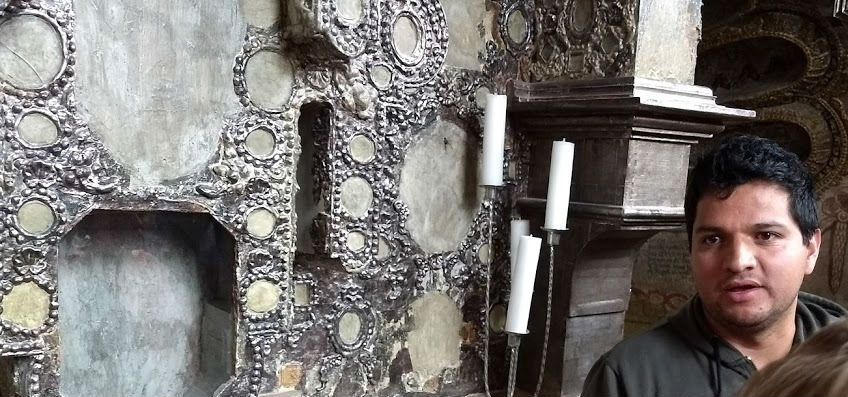
Another side altar still featured angels that once flew above the now absent altar and frescos of the founding father’s parents. I learned that over the years of retreats and pilgrimages folks liked to pilfer a relic or image to take home. So from about my chest level down are empty frames where relics and art once hung. Visiting Mexicans, not really being known for their height, couldn’t reach the remaining, higher up, images.
Then, with me like a dumbstruck child in an immense toy store, we gamboled to the other side of the main altar to the back area of the chapel to Our Lady of Loreto. This small room once held the clothes for the statue of the Virgin and, again, featured murals telling the story of how she moved her home from the Middle East to Loreto, Italy.

Next came a larger, no longer used chapel followed by another that reminded me of the Island of Misfit Toys, as here resided statues and art in various states of decay. The church was built on top of hot springs to keep the local Otomis from worshipping their old gods through sexual acts in the water. Now the hot water now travels up the church’s walls and floors. This humidity causes the lace like paint work to decay. Nearly any art that touches a wall or floor must be held together by the sheer force of memory. Touching anything would likely turn the art to dust.
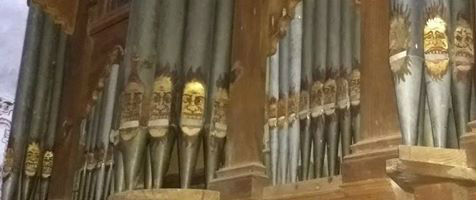
Next we went up to the choir loft to see the ceiling images closer up. There, close to the organ, are scary faces. The fear of provoking their ire is enough to prevent you from ever hitting a wrong note.
Next to the choir loft is a small room in which the founder used to whip himself under the belief that pain and suffering brings you closer to God. On the rare occasion I’ve met someone who does self-flagellate, they insist you get numb to the pain. I've heard that the experience is similar to taking LSD, as you are in an alternate reality. Personally, I might rather just take LSD and avoid the painful middle man.

On the walls of this cell is a fascinating image of a disrobed man surrounded by a listing of the Seven Deadly Sins. The priest felt the seven weren’t enough so he added an eighth, gossip. The image of the disrobed man baffles me on two counts; why is he nude, and why is he beefy, tall, curly-haired and white, whereas the founder and local Otomi men looked nothing like that?
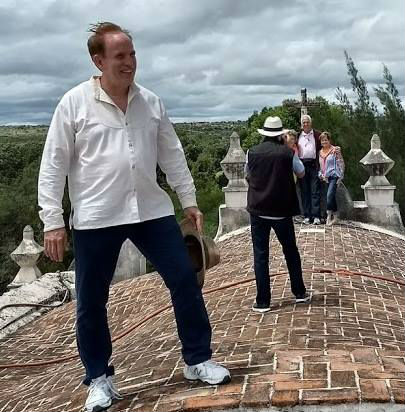
As I was pondering the mystery, I was invited up to the rooftop to see the bells and art up there. Again, a cat with catnip isn’t as happy as was I.
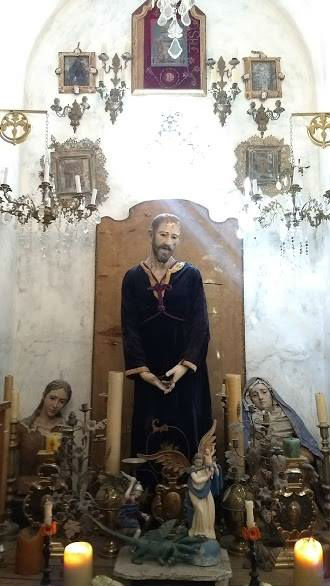
Later that day I went to the guide’s, Luis’, home where he has amassed the largest personal collection of ancient religious art I have ever seen. Virgins, saints, milagros, crowns, paintings and folk art grace two rooms. It is a stunning display, which I could spend weeks absorbing, trying to understand what is being communicated.
That same afternoon I got to explore one of the tunnels under Atotonilco containing a femur and jaw of a long time ago resident wooly mammoth. It was a magical day from start to finish, which I can never appreciate enough.
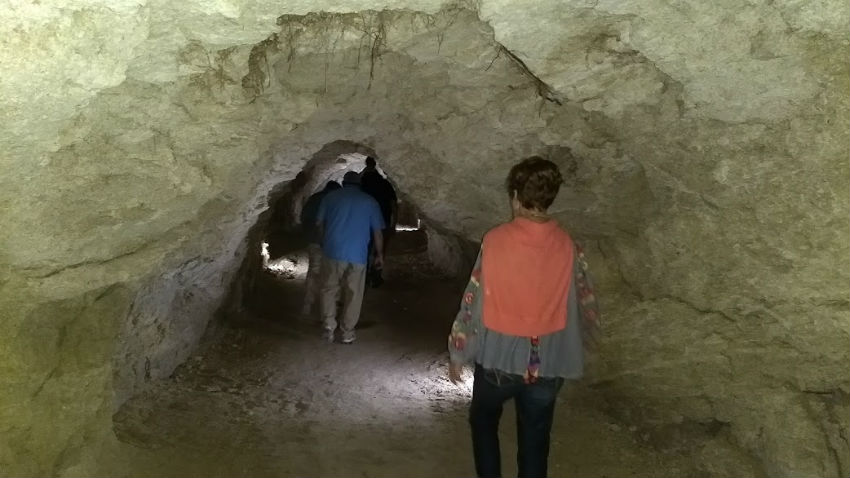
**************
<
Joseph Toone is Amazon's bestselling author of the San Miguel de Allende Secrets series of books and TripAdvisor's best rated historical walking tour guide. For more information contact toone.joseph@yahoo.com or visit History and Culture Walking Tours or JosephTooneTours.com, also on FaceBook.
|